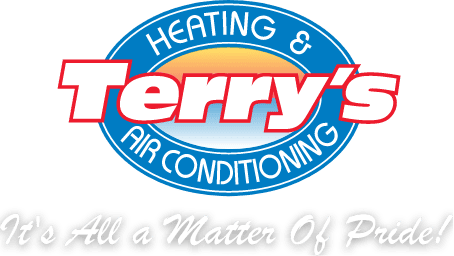What Is Radon and Why Is It Bad?

Radon is a naturally occurring radioactive gas that comes from the breakdown of uranium in soil, rock, and water. It’s found in trace amounts all over the globe. However, while radon may be harmless at low levels, it becomes a major health hazard when it accumulates inside homes and buildings, especially in enclosed spaces like basements and lower-level living areas.
If you live in Idaho, your home may be at risk—without you even knowing it. That’s why our team at Terry’s Heating and Air Conditioning recommends proactive radon testing to ensure you and your loved ones are safe from this invisible threat.
Danger, Danger: You Can’t Smell, See, or Taste Radon
One of the biggest dangers of radon is that it’s undetectable to human senses. You can’t smell it, see it, or taste it. As a result, many homeowners go years without realizing there’s a problem—until serious health consequences arise.
Without testing, you might never know your home has elevated radon levels. That’s why it’s crucial to take preventive measures. At Terry’s Heating and Air Conditioning, we encourage all homeowners in Burley, to have their properties tested.
If your home exceeds the Environmental Protection Agency’s (EPA) recommended radon levels, our certified team can assist with remediation to restore safe indoor air quality.
What Are the Health Hazards of Radon?
Radon is a carcinogen. According to the US Environmental Protection Agency (EPA) and the Office of the Surgeon General (OSG), radon exposure is the second leading cause of lung cancer in the United States—second only to smoking. The EPA estimates radon-related lung cancer causes roughly 20,000 deaths per year in the U.S. alone.
Even more concerning is how radon can affect vulnerable populations like children. The Agency for Toxic Substances and Disease Registry (ATSDR) reports that children are at a greater risk of harm from radon exposure due to their developing bodies, faster breathing rates, and different lung structures.
Radon exposure doesn’t result in immediate symptoms. Instead, it builds up over time, quietly increasing your risk of serious illness without any warning signs. That’s why routine testing is critical, especially if you have children, elderly family members, or anyone with respiratory conditions living in your home.
What Are the Chances You Have Too High a Radon Exposure?
The likelihood of elevated radon levels in your home depends on several factors, most notably your geographic location, foundation type, and ventilation. According to the American Cancer Society, the most common way people are exposed to radon is by inhaling it indoors, where the gas becomes trapped and concentrates over time.
Radon levels can vary widely—even between neighboring houses. Homes built over granite or shale bedrock, or those with poor ventilation and unfinished basements, are especially vulnerable.
In addition to residential exposure, some people face increased risk at work, especially those employed in underground environments like tunnels or basements. While radon can also leach into groundwater, drinking water-related exposure is generally much less concerning than airborne exposure.
How Can You Minimize Your Radon Risk?
The most effective way to minimize your radon risk is by testing your home. Since radon is invisible and odorless, the only way to detect its presence is through a radon test.
You can purchase a DIY short-term radon testing kit at most Burley, home improvement stores. These tests typically measure radon levels over a period of 2 to 90 days and are placed in the lowest level of your home that you frequently use—such as a basement living area, finished lower-level bedroom, or first-floor family room.
If your short-term test shows high results, the next step is to conduct a long-term test, which measures levels for more than 90 days and provides a better average reading. This helps confirm whether your initial test result was a temporary fluctuation or an ongoing issue.
The EPA recommends action if your radon levels are at or above 4.0 pCi/L (picocuries per liter). If you receive a reading in this range, contact our experts at Terry’s Heating and Air Conditioning right away. Our mitigation specialists can help reduce your home’s radon levels through proven techniques such as sub-slab depressurization, improved ventilation, or sealing entry points.
Keep in mind, radon levels can change over time. We recommend retesting your home every three years, or any time you renovate, finish a basement, or update your HVAC system.
Call Us Today for Radon Mitigation in Burley
At Terry’s Heating and Air Conditioning, we understand how important your family’s health is. That’s why our certified professionals offer both radon testing and mitigation services to homeowners throughout Burley, ID, and surrounding communities.
Whether buying a new home, remodeling an existing one, or simply wanting peace of mind, our team is here to help. We’ll recommend reliable testing kits, assist with conducting tests, and provide expert guidance on remediation options if elevated radon levels are detected.
Don’t wait for radon to become a hidden threat in your home.
Contact us today at 208-734-4376 or request service online to schedule your radon inspection or learn more about your options. With something as serious as your family’s health, it’s always better to be safe than sorry.
